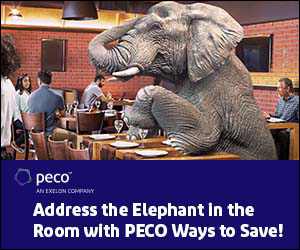You are hard pressed today to enter any management meeting, executive board room, or human resources conference without hearing professionals and leaders talking about the challenge of motivating today’s employees. With employee disengagement at an all-time high (70% and climbing), as leaders, we are all looking for some innovative and new employee engagement ideas. Some cutting-edge tool or creative strategy we can use that will finally inspire our teams to be as passionate about business growth as we are.
Sometimes, however, the answers we need are found in the most unusual places, and often right in front of us. I live in Asheville, N.C., an area of the country that like most of the United States was hit heavy with some crazy weather these past few months. While others suffered torrential rain, wild fires, we were among those hit by snow and ice storms.
Now, while I realize, for some areas of the country snow and ice are no big deal but for Western North Carolina it is enough to paralyze us in terms of school and office closings. It forces us to spend a few days shut in with the family. One of the early storms hit on Friday and kept coming right through the weekend. My husband and I canceled dinner with friends, missed a fundraiser we were set to attend, and settled for eating whatever we had in the house rather than brave the storm to head to the grocery store.
Yet despite the bad weather, and all the events we rescheduled, there was one thing we were determined not to miss. One thing, that unless the other party made the decision not to hold, we were going to be there even if we had to walk. That one thing? Our spin classes at our local gym. Sounds sort of silly doesn’t it? That the only place we ventured out to, the only thing we did not cancel off our schedule was our spin class.
Why? As we got ourselves settled in for our class (and yes, we walked) I looked around the room and noticed something amazing. There was no one person missing. That despite the weather, the road conditions and the ready-made excuse anyone of us could have used, not one of our “spin class regulars” missed our class. Some people walked there like us, others brought their children (as school was canceled) and still others left their homes early to ensure they had enough time, given road conditions, to drive there.
Again why? Then it hit me; as I watched our “group” cracking jokes, laughing, telling stories about the weather, what struck me was we had formed a community. Now, just so we are all on the same page, the definition of community I am using is a feeling of fellowship with others, a result of sharing common attitudes, interests and goals. And community—that is the simplest of employee engagement strategies. And it is the most powerful!
A community creates a feeling of connection and the need to support one another. In addition, the fear of missing something if we were not there is the key, in my opinion, to fully engaging anyone—employees or students. It was not our teacher, not our desire to exercise (believe me, not our desire to exercise) that made us show up, no matter what, but rather our commitment to one another. Commitment to our community.
Imagine a work environment, where it was not the manager, but rather the commitment to one another that drove your employees to show up and give their all no matter what. Yes, community is the very simplest of employee engagement ideas.
So how do you create community?
Create Opportunity—our teacher created the class, invited us to attend, and committed to giving us this opportunity each and every week. As leaders, you need to do that in the workplace too. Find and create opportunities for your teams to work on projects together, serve on task forces, or even just gather for a social event. In order to create community, you have to provide the opportunity and the place to let it happen.
Give Them Say—our teacher may be in charge of the class, but all along she is giving us opportunity to have a say in what we are doing. We choose some of the songs, we choose part of the workout, we choose whether we climb a hill or do a tabata. In order to build community, you need to give your employees that room too. It is from the ideas, the brainstorming, that the connections happen and the relationships build.
Give ‘Em Room—we take over the spin class quite a bit. We cut up, laugh, and shout things out. While the teacher is running the show, she clearly gives us room to feel that this is “our” class not hers. To create community, you need to give your employees the space and room to feel like they own it, and have a sense that they are in charge.
Thank Them—last but not least, despite the fact that our teachers schedules it, plans the workout, and shows up to ensure we actually exercise, she ends each and every class by thanking us for being there. That very simple gesture makes us commit not only to the class and one another, but to her. You need to tell your employees how much you appreciate their time, and their commitment, and with that small act you will ensure they create community with each other as well as with you.
So there you have it, four easy steps that lead to the simplest of employee engagement ideas. As leaders, we need to understand that engaging employees is not about working hard or investing more time and energy on a fancy new incentive program. Instead, it is about giving them the opportunity to bond with another, as well as build relationships and connections. Building community is a key step in doing what it takes to fully engage today’s workforce. •
Meridith Elliott Powell is a keynotes speaker and award-winning author. She helps her clients learn the business growth strategies needed to succeed no matter what this economy does. For more information, free ideas and strategies, visit her website www.valuespeaker.com or call directly 828-243-3510, or connect on LinkedIn!











